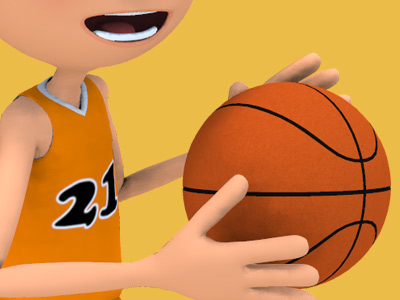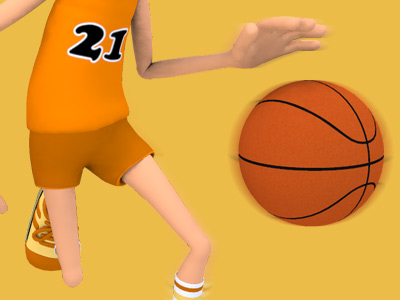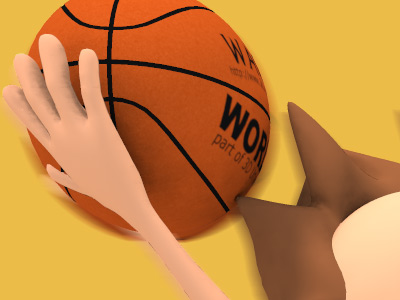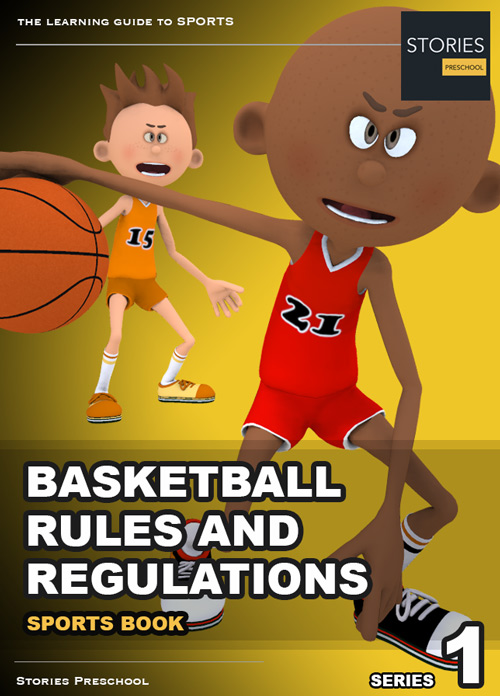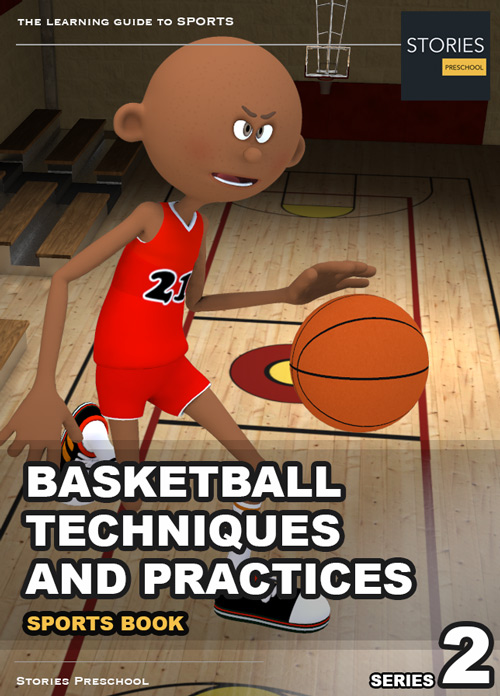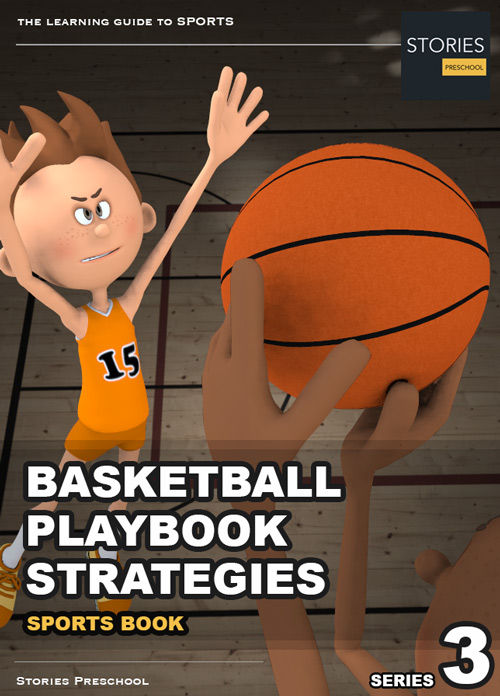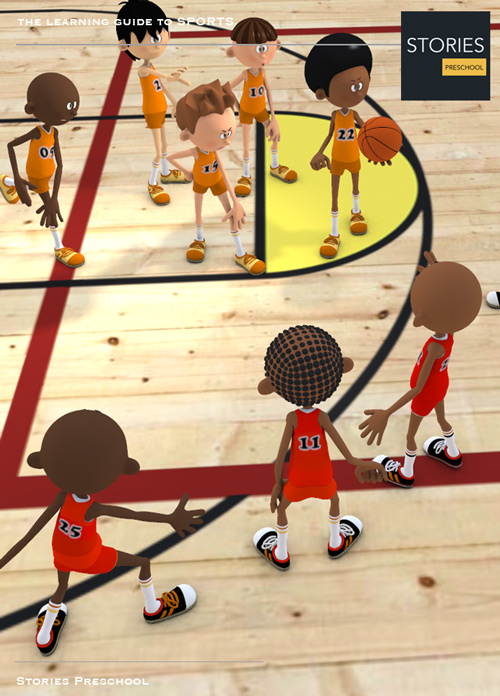Basketball
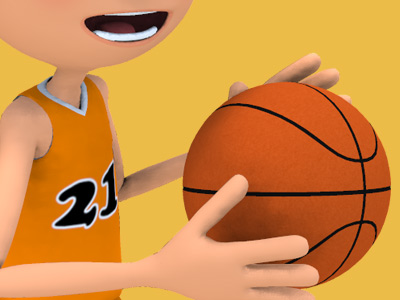
Slam Dunk
A slam dunk, also dunk or dunk shot, is a type of basketball shot that is performed when a player jumps in the air, controls the ball(s) above the horizontal plane of the rim, and scores by putting the ball directly through the basket with one or both hands. This is considered a normal field goal attempt; if successful it is worth two points. Such a shot was known as a "dunk shot" until the term "slam dunk" was coined by former Los Angeles Lakers announcer Chick Hearn.
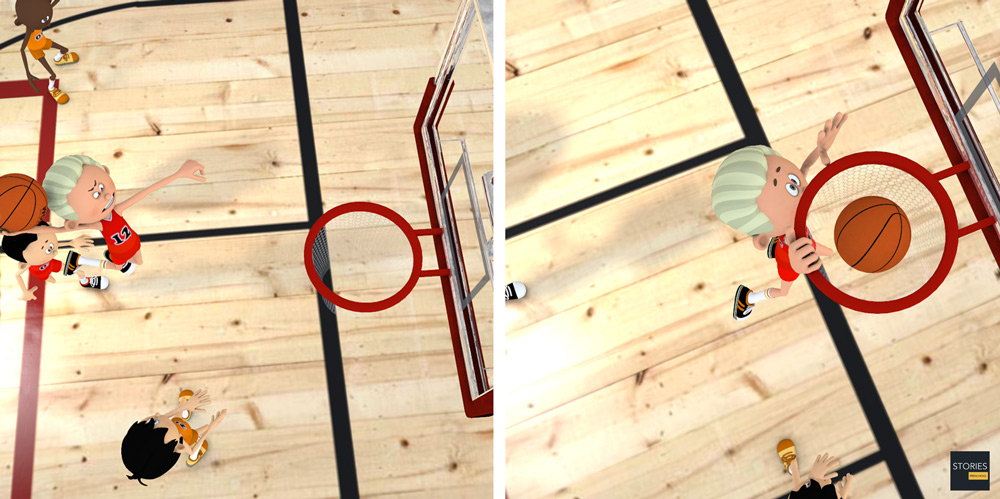
The slam dunk is the most efficient basketball shot. Moreover, it is a crowd-pleaser. Thus, the maneuver is often extracted from the basketball game and showcased in slam dunk contests. Perhaps the most popular is the NBA Slam Dunk Contest held during the annual NBA All-Star Weekend. The seminal incarnation of the NBA Slam Dunk Contest was held during the half-time of the 1976 American Basketball Association All-Star Game.
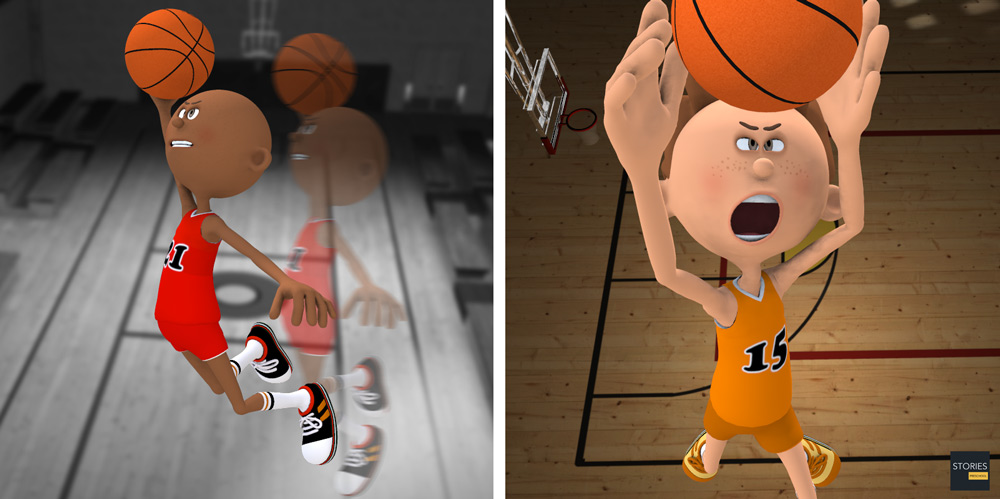
Dunking was banned in the NCAA from 1967 to 1976. Many people have attributed this to the dominance of the then-college phenomenon Lew Alcindor (now known as Kareem Abdul-Jabbar); the no-dunking rule is sometimes referred to as the "Lew Alcindor rule."
The phrase "slam dunk" has since entered popular usage in American English, meaning a "sure thing": an action with a guaranteed outcome, or a similarly impressive achievement, in the same way that the baseball-inspired phrases "step up to the plate" or "he hit it out of the park" were more commonly used in previous years.
Dunk types
Dunk types reflect the various motions performed on the way to the basket. They start with the basic one- or two-hand forward-facing dunk and go on through various levels of athleticism and intricacy. Discrete dunk types can be modified by appending other moves; for example, a player who passes the ball off the backboard, catches it in the air, and executes a double-pump dunk would be said to have completed a "self-pass off the backboard, double pump".
Double Pump
At the onset of the jump, the ball is controlled by either one or both hands and once in the air is typically brought to chest level. The player will then quickly thrust the ball downwards and fully extend their arms, bringing the ball below the waist. Finally the ball is brought above the head and dunked with one or both hands; and the double pump appears as one fluid motion. As a demonstration of athletic prowess, the ball may be held in the below-the-waist position for milliseconds longer, thus showcasing the player's hang time (jumping ability).
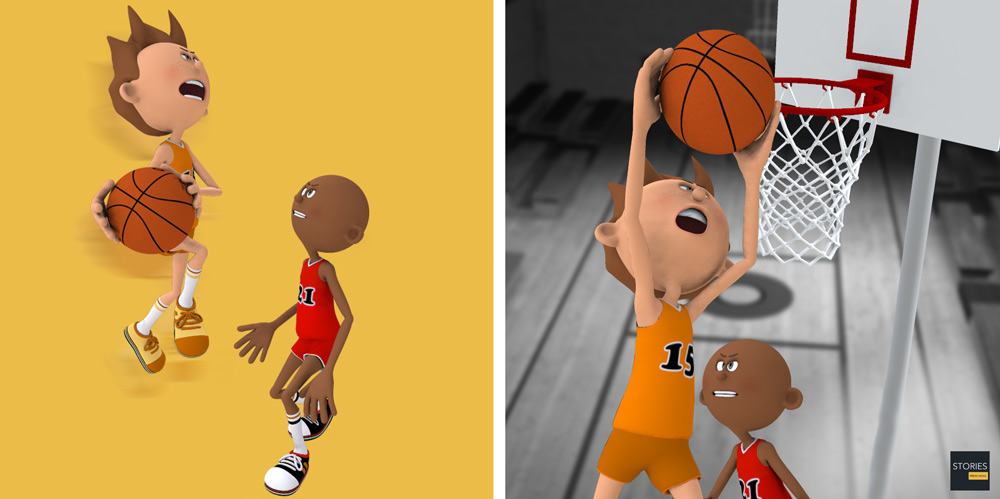
Whether the result of a 180° spin or body angle at takeoff, the double pump is generally performed with the player's back toward the rim. While this orientation is rather conducive to the double pump motion, Spud Webb was known to perform the dunk while facing the basket. Additionally, Kenny "Sky" Walker, Tracy McGrady—in the 1989 and 2000 NBA Contests, respectively—and others, have performed 360° variation of the double pump (McGrady completed a lob self-pass before the dunk). Circa 2007, independent slam dunker T-Dub performed the double pump with a 540° spin which he concluded by hanging on the rim.
Tomahawk
Due to the undemanding body mechanics involved in execution, the tomahawk is employed by players of all sizes and jumping abilities. Because of the ball-security provided by the use of both hands, the tomahawk is a staple of game situations—frequently employed in alley-oops and in offense-rebound put-back dunks. Additionally, the two-hand finish can exert tremendous force on the basket—Darryl Dawkins twice shattered NBA backboards with tomahawk dunks.
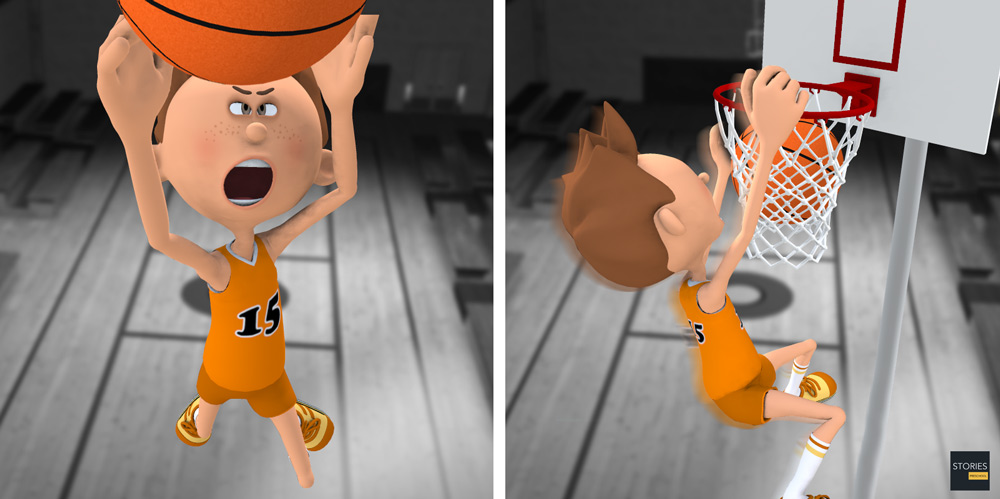
In one common variation, a 360° spin may be completed prior to or simultaneously with the tomahawk. Circa 2009 independent slam dunker Troy McCray pioneered an especially complex variant of the dunk: once the tomahawk motion is complete, instead of slamming the ball in the rim, a windmill dunk is then performed.
Windmill
Before takeoff, or at the onset of the jump, the ball is brought to the abdomen and then the windmill motion is started by moving the ball below the waist according to the length of the player's fully extended arm. Then following the rotation of the outstretch arm, the ball is moved in a circular motion, typically moving from the front towards the back, and then slammed through the rim (from the profile view of a player facing the basket, the windmill motion most generally appears clockwise). Although, due to momentum, many players are unable to palm the ball through the entire windmill motion, the dunk is often completed with one-hand as centripetal force allows the player to guide the ball with only their dunking hand. In some instances sticky resins or powders may be applied to the palm, these are thought to improve grip and prevent loss of possession. Amongst players, subtle variations in the direction of the windmill depend on bodily orientation at takeoff and also jumping style (one-foot or two-feet) in relation to dominant hand.
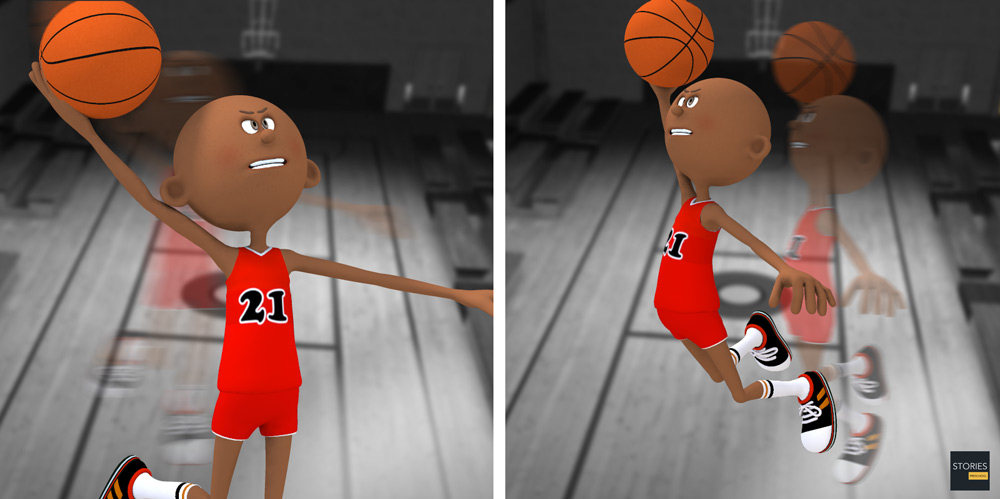
There are a number of variations on the windmill, the most common being the aforementioned one- or two-hand variants. In these cases, the windmill motion may be performed with the previously discussed one-arm technique and finished with one- or two-hands, or the player may control the ball with two hands, with both arms performing the windmill motion, finishing with one or both hands. Additionally, the ball may be cuffed between the hand and the forearm—generally with the dominant hand. The cuff technique provides better ball security, allowing for a faster windmill motion and increased force exerted on the basket at finish, with either one or both hands. Using the cuffing method, players are also afforded the opportunity of performing the windmill motion towards the front (counterclockwise), a technique exploited by French athlete Kadour Ziani when he pioneered his trademark double-windmill.
Occasionally in the game setting, the windmill is performed via alley-oop but is rarely seen in offense-rebound putback dunks due to the airtime required. Dominique Wilkins popularized powerful windmills—in games as well as in contests—including two-handed, self-pass, 360°, rim-hang, and combined variants thereof.
Under the Leg
For one-footed jumpers, the ball is generally transferred to the non-dominant hand just before or upon take-off; for two-footers, this transfer is often delayed for milliseconds as both hands control the ball to prevent dropping it. Once airborne, the dunker generally transfers the ball from non-dominant to dominant hand beneath a raised leg. Finally, the ball is brought upwards by the dominant hand and slammed through the rim.
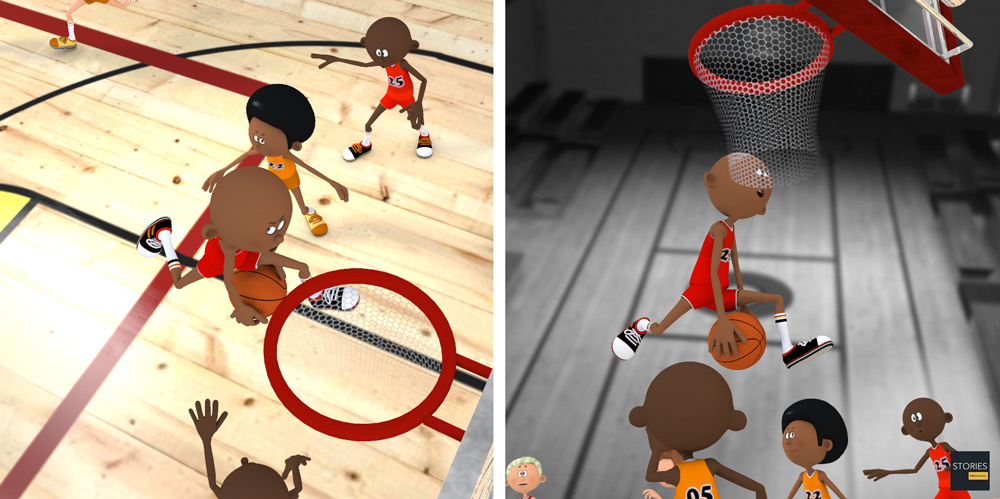
The under-the-leg dunk was popularized by Isaiah Rider in the 1994 NBA slam dunk contest, so much so that the dunk is often colloquially referred to as a "Rider dunk" — notwithstanding Orlando Woolridge's own such dunk in the NBA contest a decade earlier. Since then, the under-the-leg has been attempted in the NBA contest by a number of participants, and has been a staple of other contests as well. Its difficulty — due to the required hand-eye coordination, flexibility, and hang-time — keeps it generally reserved for exhibitions and contests, not competitive games. Ricky Davis has managed to complete the dunk in an NBA game, but both he and Josh Smith have botched at least one in-game attempt as well.
Because of the possible combinations of starting and finishing hands, and raised-legs, there are many variations on the basic under-the-legs dunk—more so than any other. For example, in a 1997 French Dunk contest, Dali Taamallah leapt with his right leg while controlling the ball with his left hand, and once airborne he transferred the ball from his left hand, underneath his right leg to his right hand before completing the dunk. NBA star Jason Richardson has also pioneered several notable variations of the between-the-legs including a lob-pass to himself and a pass off of the backboard to himself. Independent athlete Shane 'Slam' Wise introduced a cuffed-cradle of the ball prior to initiating the under the leg transfer and finishing with two-hands. While a number of players have finished the dunk using one- or two-hands with their backs to the rim, perhaps the most renowned variant of the dunk is the combination with a 360°, or simply stated: a 360-between-the-legs. Due to the athleticism and hang-time required, the dunk is a crowd favorite and is heralded by players as the preeminent of all dunks.
Elbow Hang
The player approaches the goal and leaps as they would for a generic dunk. Instead of simply dunking the ball with one or two hands, the player allows their forearm(s) to pass through the basket, hooking their elbow pit on the rim before hanging for a short period of time. Although the dunk was introduced by Vince Carter in the 2000 NBA Slam Dunk contest, Kobe Bryant was filmed performing the dunk two years earlier at an exhibition in the Philippines. Colloquially, the dunk has a variety of names including 'honey dip', 'cookie jar', and 'elbow hook'.
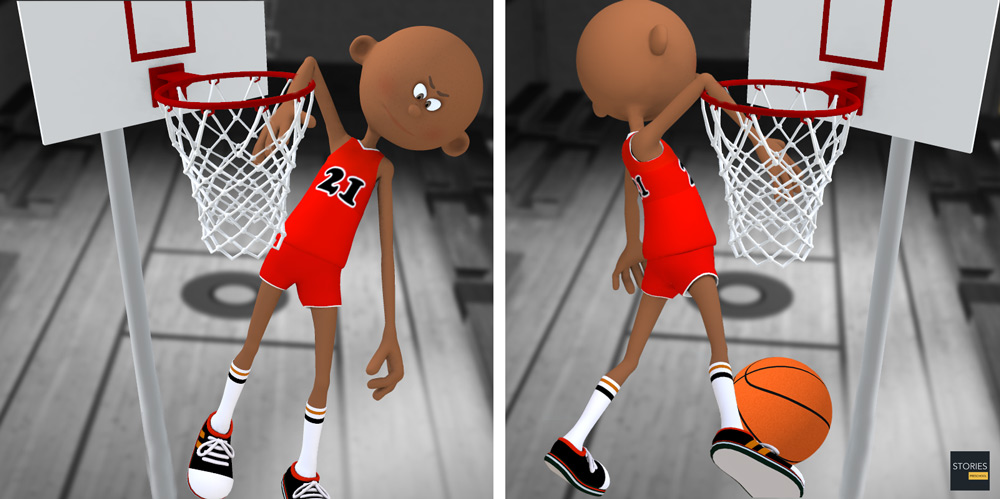
In the 2011 NBA contest, L.A. Clippers power-forward Blake Griffin completed a self-pass off of the backboard prior to elbow-hanging on the rim. A number of other variants of the elbow hang have been executed, including a lob self-pass, hanging by the arm pit, a windmill, and over a person. Most notable are two variations which as of July 2012, have yet to be duplicated. In 2008, Canadian athlete Justin Darlington introduced an iteration aptly entitled a 'double-elbow hang', in which the player inserts both forearms through the rim and subsequently hangs on both elbows pits. Circa 2009, French athlete Guy Dupuy demonstrated the ability to perform a between-the-legs elbow hang; however, Guy opted not to hang on the rim by his elbow, likely because the downward moment could have resulted in injury.
Dunk Modifiers
Discussed in this module are activities which when applied, modify a given dunk type. Modifier-activities occur prior to leaping or while airborne. Modifiers performed prior to leaping pertain to the manner of approach (e.g., locomotion or standstill), angle of approach (e.g., from the baseline), distance of leap from the basket, the addition of a pass (e.g., alley-oop), or some combination thereof. Modifiers performed while airborne pertain to bodily rotation (e.g., 360°), obstruction of own vision (e.g., arm-over-the-eyes), other bodily movements superfluous of dunk type (e.g., voluntary kicking of the legs), or some combination thereof. Dunk types can also be modified with obstructions (e.g., leaping over a car or person) which influence activities both prior to leaping and while airborne.
Modifiers are inherent to in-game dunking and conduce toward successful dunking as a means to score points. Modifiers are important in the grading of slam dunk contests because dunk types are made more difficult when modified (i.e., successfully executed modified-dunks ostensibly yield high scores in contests).
For taxonomic purposes it is an important distinction, but the modifiers discussed below are often considered dunk types in common parlance. This misconception is perhaps attributable to the modifier being the most salient component of the dunk from the perspective of the observer. However, each dunk modifier requires a dunk type to be a successful dunk—albeit the most-basic dunk type.
Alley-oop
An alley-oop dunk, as it is colloquially known, is performed when a pass is caught in the air and then dunked. The application of an alley-oop to a slam dunk occurs in both games and contests. In games, when only fractions of a second remain on the game or shot clock, an alley-oop may be attempted on in-bound pass because neither clock resumes counting down until an in-bounds player touches the ball. The images to the right depict an interval spanning 1/5 of a second.
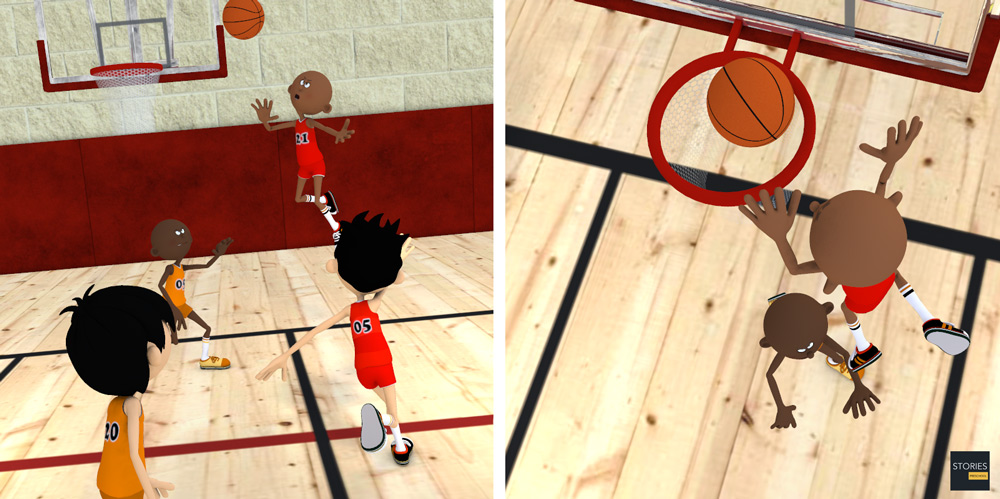
Baseline dunk
The baseline dunk is an approach-modifier of any dunk type in which the player approaches the basket along the court-boundary (baseline) which runs parallel with the backboard. In the game setting, the dunk often comes as the result of a pass, creating an assist opportunity for a teammate. In the contest, the baseline approach may be used as a means of convenience, facilitating a particular dunk type (e.g., passes bounced off the side of the backboard or its padding) or to increase the difficulty of a dunk type in hopes of meriting higher scores.
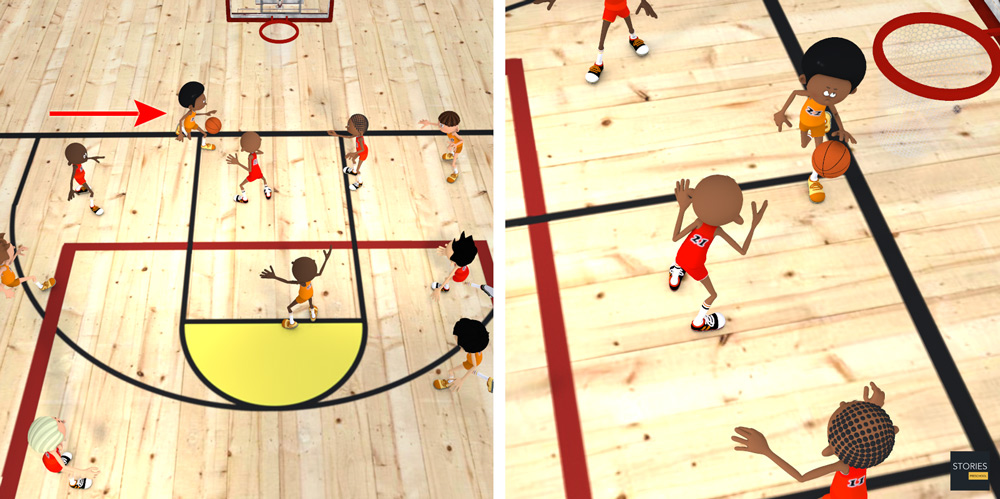
From a Distance
This is a dunk where the player takes off from a distance which is significantly further away from the basket than is considered typical. The free-throw line is most commonly constituted as the take-off point, an effect likely attributed to the easily observable span between the line and the basket in the view of the TV audience. In order to achieve the hang-time and altitude necessary, players will generally leap from one-foot to maximize the momentum generated from the half-court running start often required to complete the dunk. A cornerstone of dunk contests, dunks from a distance are also performed in games, most often on the fast break.
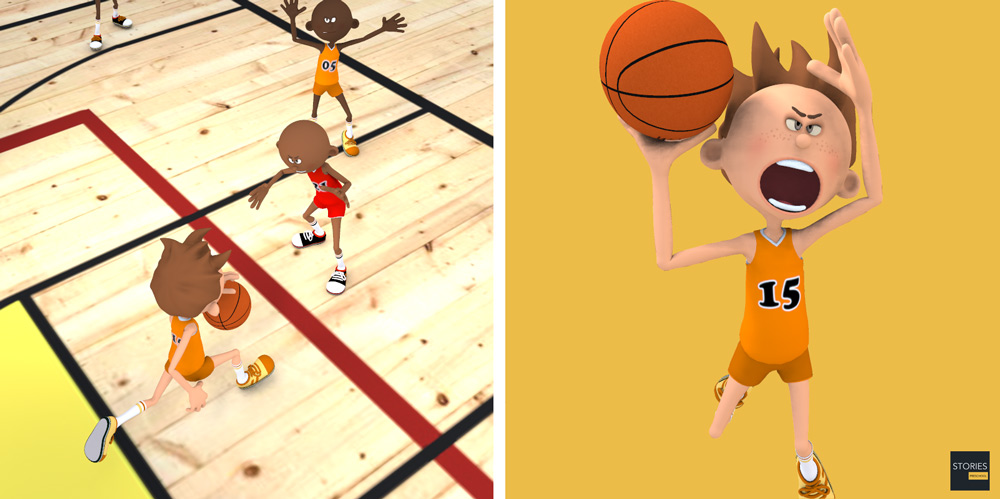
Free Throw Line
In the 1950s, Jim Pollard and Wilt Chamberlain had both dunked from the free throw line—15 feet from the basket. Chamberlain was able to dunk from the free-throw line without a running start, beginning his forward movement from within the top half of the free-throw circle. This was the catalyst for the 1956 NCAA rule change which requires that a shooter maintain both feet behind the line during a free-throw attempt.
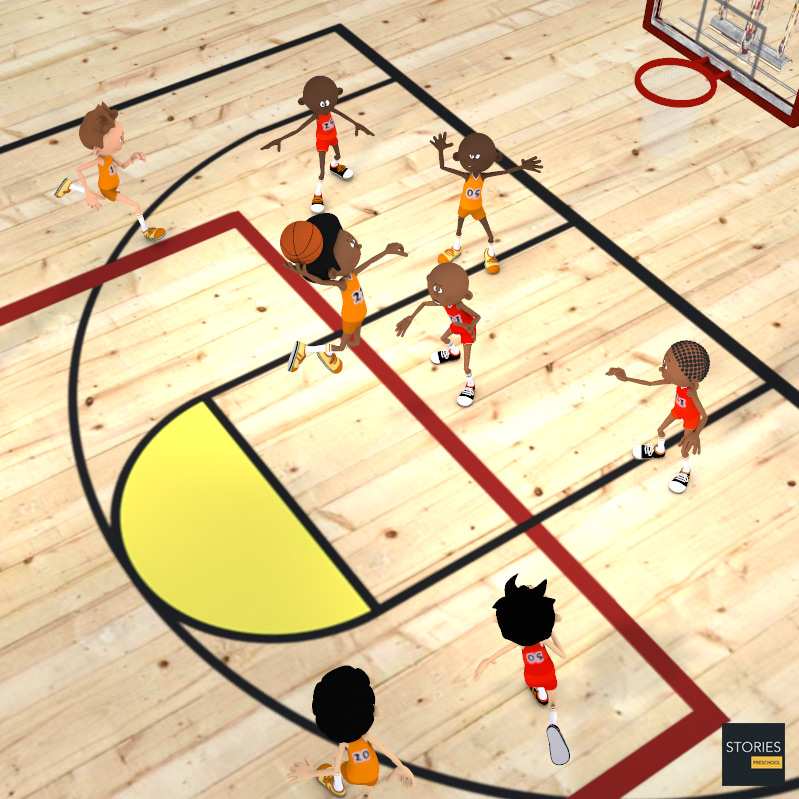
In the 1976 ABA Slam Dunk Contest, Julius Erving dunked after leaping from the free-throw line, with his heel on the line, and has since been credited with introducing the free-throw line dunk to the general public.
In the 1988 NBA Slam Dunk Contest, Michael Jordan dunked from the free-throw line, in the same manner as Julius Erving, but parted his legs making his dunk more revolutionary than Erving's.
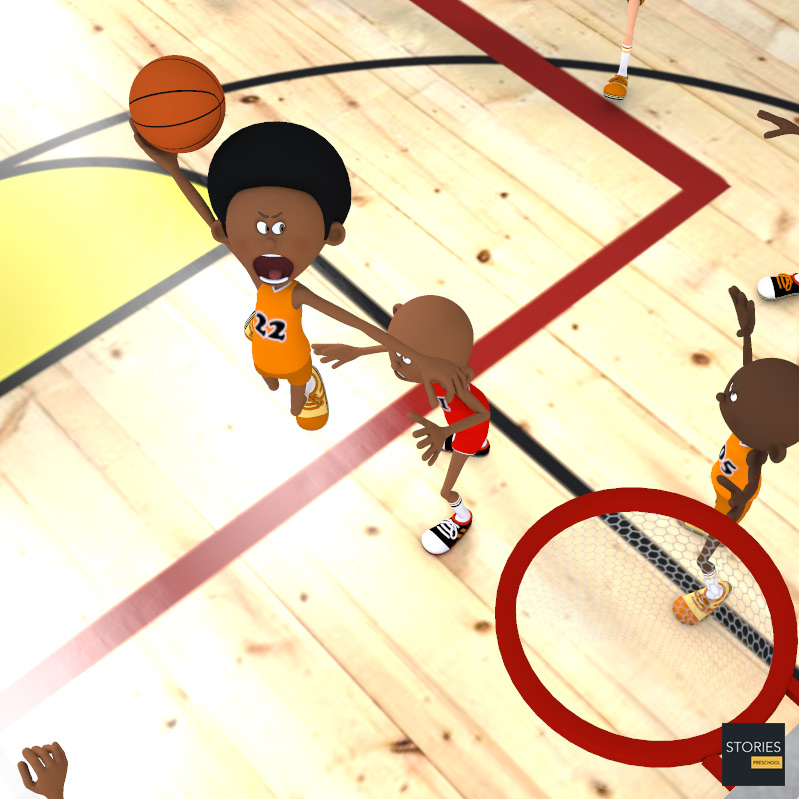
In the 2011 NBA Sprite Slam Dunk Contest, Serge Ibaka dunked from behind the free-throw line, getting a score of 45 for the dunk, and finishing 4th.
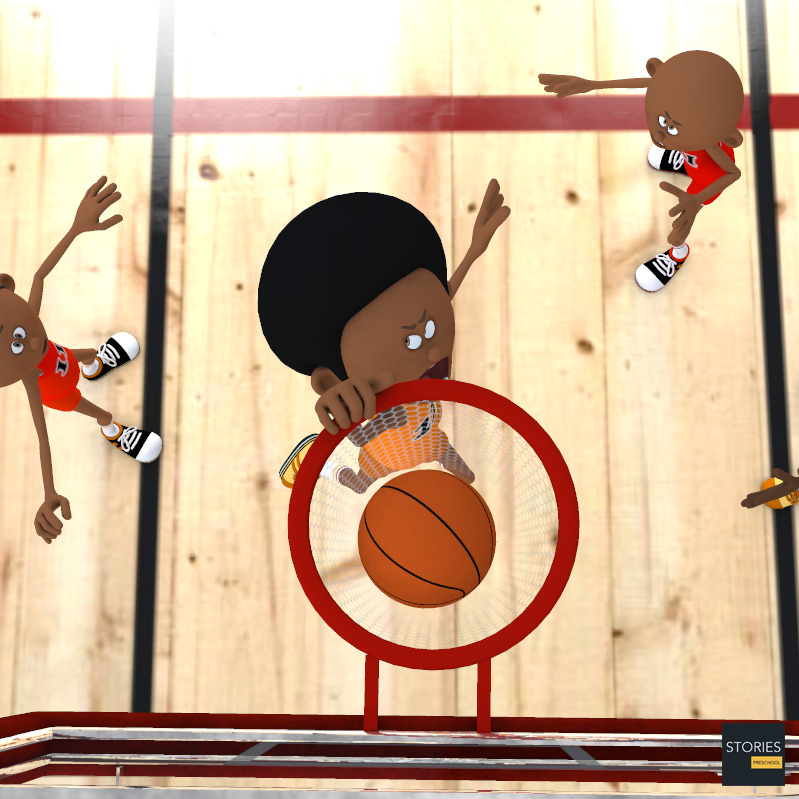
Other
Other instances of dunks from a distance abound. James White in the 2006 NCAA Slam Dunk Contest successfully performed tomahawk and windmill variations of the foul-line dunk. Though he was unable to complete a between-the-legs from the foul line at that contest, he has been known to execute it on other occasions.
In the 2008 NBA Slam Dunk Contest, Jamario Moon leaped from the foul-line then, using his non-dominant hand, caught and dunked a bounce-pass from teammate Jason Kapono.
Independent 6'2" North American athlete Eric Bishop introduced a dunk entitled the 'Paint Job'. The title is in reference to the key on a basketball court, often known as 'paint' in common parlance. Approaching along the baseline with a running dribble, Bishop jumped with one-foot at the border of the key, dunked with one-hand while gliding over the key and landed just beyond the border on the side opposite his take-off—a 16-foot flight.
Obstructions
The player approaches the basket and obstruction, and then leaps. During flight, some portion of the player's body is elevated above the obstruction. This may entail raising the legs or some portion thereof in-air to soar over the obstruction. In other instances, the trunk-moves over an obstruction as the legs pass around it. Common obstructions include: motor vehicles; crouched, seated or standing person(s); ball rack; or other available objects.
Perhaps the most popular obstruction-modified dunk is the Dubble-Up. Aptly eponymous of the its pioneer—T-Dub, an American dunker hailing from Minnesota—the Dubble-Up starts with a person standing before the basket, holding the ball above their head. The dunker approaches and leaps as though their groin would soar above just above the head and their legs around the stationary person. Just prior to clearing the person, the dunker will assume control of the ball with one or both hands, guide it under a raised leg, transferring it to the appropriate hand, clearing the ball-holder, raising the ball above the horizontal plane of the rim, and finally guiding it downward through the basket. While the Dubble-Up mimics a between-the-legs dunk, Kenny Dobbs and Justin Darlington have both performed an under-both-legs variant.
Other obstruction-dunks are worth noting: Haneef Munir performed a Dubble-Up, dunking with his right-hand and then caught and dunked a second ball with his left hand—a yet to be duplicated dunk pioneered by Jordan Kilganon on a lower, non-regulation rim. Jordan Kilganon, a Canadian athlete, approached from the baseline a person standing, holding the ball above their head. Kilganon leaped, controlled the ball in front of his torso and raised it above the horizontal plane of the rim before bringing the ball downward into the hoop and hooking both elbows on and hanging from the rim.
SPORTS
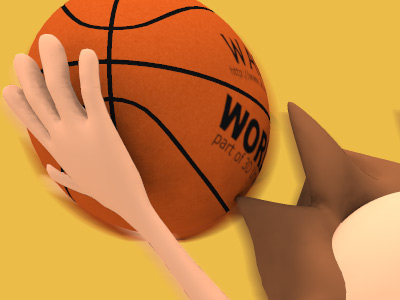
RESOURCES
This article uses material from the Wikipedia articles "Basketball" and "Slam dunk", which is released under the Creative Commons Attribution-Share-Alike License 3.0.
© Stories Preschool. All Rights Reserved.
